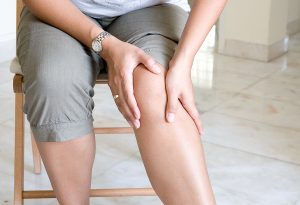The shoulder contains a ball and socket joint that’s supported by four muscles that lead from the shoulder blade to the superior humeral head, which is the rounded end of the upper arm bone. Those muscles make up the rotator cuff and stabilize the shoulder joint.
This is one of the most common tendon injuries, and the chances of injuring these muscles increase with age. An estimated 3 out of 10 adults over the age of 60 have a torn rotator cuff and 6 out of 10 after the age of 80. Because it is so common as the shoulder joint gets a lot of use, it’s just as important to know that there are a variety of treatment options. Premium Sports and Orthopedics will cover the possible treatment options for a torn rotator cuff and what your recovery looks like during and after treatment.
Understanding Rotator Cuff Injuries and the Common Symptoms
As we mentioned, four muscles support the shoulder joint and assist with arm movements.
- Infraspinatus – It sits in the flat central portion of the back of your shoulder blade and assists with outward rotation of the arm.
- Subscapularis – It covers the front of the shoulder blade and supports your outstretched arm when it’s away from the body.
- Supraspinatus – It sits on the top edge of your shoulder blade, near the collarbone, and helps you lift your arm.
- Teres Minor – It sits at the bottom of your shoulder blade and helps you turn and rotate your arm outward.
When any of those muscles are stretched to point the muscle fibers tear, a rotator cuff tear occurs. Injuries often occur with:
- Advancing age, particularly after the age of 60.
- Falls where your shoulder absorbs some of the impact.
- Family history can play a role in the odds of experiencing rotator cuff injuries.
- Jobs involving repetitive overhead arm positions, such as sheetwork installation or painting.
- Sports with overhead arm movements, such as baseball or volleyball.
Overuse of the group of muscles that make up the rotator cuff causes the tears associated with this injury. It causes a dull, constant ache in your shoulder. That pain makes it hard to do simple things like fasten a bra, reach behind your back to scratch an itch, or brush or comb your hair. The continuous ache may make it hard to sleep. Some people experience weakness in the affected arm.
Not everyone experiences every symptom. Some people only notice arm weakness. Others may have a dull ache that comes and goes or only appears when reaching behind the back.
How Is a Torn Rotator Cuff Diagnosed?
Before any treatment begins, an accurate diagnosis is needed. First, the shoulder injury specialist performs a physical examination that looks at your range of motion, shoulder and arm strength, and pain level. Second, your sports and orthopedics doctor may order X-rays, MRIs, or ultrasounds to confirm the diagnosis and assess the extent of the tear. The extent of damage to the rotator cuff determines the best course of treatment.
Non-Surgical Approaches to Rotator Cuff Injuries
When the tear is small, non-surgical approaches are the best way to treat a rotator cuff injury. Pain reduction is the first step. You may do this through over-the-counter NSAIDs like ibuprofen or hot or cold compresses. Corticosteroid injections are an option if OTC medications aren’t helping. After that, your orthopedic doctor will recommend some or all of the following.
- Rest: Give your muscles time to heal by resting. Don’t use your shoulder unless it’s necessary. Wear a sling to stabilize your shoulder joint and keep it immobilized while a torn rotator cuff heals.
- Physical Therapy: Work with an experienced physical therapist to help strengthen the rotator cuff muscles to avoid future injury.
- Biologic-Based Treatment: An FDA-approved treatment that takes your blood, processes it to extract your platelets, and injects them into the shoulder joint to aid healing.
- Regenerative Therapy: A small amount of your blood is drawn, processed to extract the cells that help your body heal, and injected back into your shoulder to speed up rotator cuff healing.
Non-invasive treatments are best, and they’re usually an option if you don’t delay treatment. Call a shoulder injury specialist at the first sign of shoulder pain.
What If Surgery Is the Only Option?
Non-surgical treatments are optimal, but sometimes your doctor will recommend surgery. This occurs when the tear is large or severe. Surgery is also a better option if pain isn’t going away with non-surgical treatment options. It’s often recommended for individuals with large tears, persistent pain despite conservative treatment, or a severe restriction in range of motion and function.
At that point, your orthopedic surgeon will discuss the best type of surgery for your rotator cuff tear. The types of rotator cuff surgery include the following.
- Arthroscopic Repair – A minimally invasive surgery where a camera is inserted through the skin to guide small surgical instruments through the incisions to complete the repair. Incisions are smaller, which leads to less pain and inflammation and faster recovery times.
- Open Repair – Complex Tears may make it too hard to reach all damaged areas with arthroscopic instruments. In that case, an open surgery with large incisions that expose all of the rotator cuff muscles is necessary. It does take longer to heal from this surgery.
- Reverse Shoulder Arthroplasty – Cases of severe arthritis and severely damaged rotator cuff injuries that are beyond surgical repair call for reverse shoulder arthroplasty. With this surgery, the ball and socket joint is restructured to allow the deltoid muscle to take the place of the damaged rotator cuff.
- Tendon Transfer – If the subscapularis muscle is too severely damaged to repair, a tendon transfer is performed. The damaged tendon is replaced with another nearby tendon.
What to Expect of Your Recovery After a Rotator Cuff Injury
If you do need surgical repair of your rotator cuff, your surgeon will give you instructions to follow during your recovery. Follow those directions. If you overuse your shoulder too early, you can slow the healing process or cause more damage.
Right after the injury, follow the RICE guidance of Rest, Ice, Compress, Elevate. Stop doing whatever activity it was and get an ice pack to hold against your shoulder. Sit down in a comfortable chair that supports your back to prevent extra strain on your shoulder.
Use over-the-counter pain medications as needed. Don’t suffer. If you continue to deal with the pain, you can make it harder for your tissue to heal as quickly as it’s able to.
When you’re up, wear a sling to keep your shoulder immobilized. You don’t want to have your shoulder moving around a lot, as that can worsen the damage.
Ask for an appointment with a shoulder injury specialist to determine the severity of the injury. You may be told to work with a physical therapist to slowly build your range of motion. Don’t miss those appointments or ignore the exercises you’re given as “homework.”
Tips for Preventing Additional Injury
Never jump right into an activity, such as a game, practice, or new job involving your shoulders without warming up. Give your muscles time to warm up and prepare for the job or game ahead. Cool down when you’re done. Don’t just sit down and rest without first allowing your muscles to slowly stop engaging.
If something is straining your shoulder muscles, stop doing it. You shouldn’t push yourself so hard that you feel a pop or snap and sharp pain. Build up to the activity if necessary or work with a physical therapist or trainer to prepare your muscles for a job or sport where your arms are often in a raised position above your head.
Listen to your doctor’s advice on how long you’ll be out of a game, practice, or work. Don’t return to your usual activities before you’re medically released to do so.
Shoulder Injury Specialists in Fresno
Seek medical care before the pain in your shoulder worsens. If you catch rotator cuff injuries in the early stages, you avoid the need for surgery. Make an appointment with Premium Sports and Orthopedics to discuss non-invasive treatments for rotator cuff tears.







